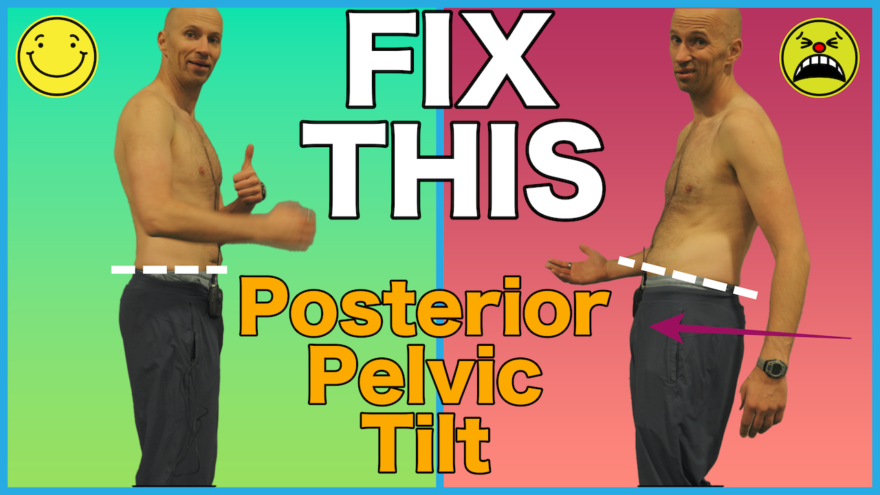Table of Contents
Posterior pelvic tilt…it’s not what you think it is
There’s all this talk on how to “fix” your anterior pelvic tilt, but folks, there’s a portion of the population that presents with a posterior pelvic tilt. How do we help these individuals?
The first step?
Realizing it’s NOT ACTUALLY A POSTERIOR PELVIC TILT.
I’ll show you not only what a posterior pelvic tilt actually is, but also how this biomechanical knowledge will improve your exercise selection for these individuals.
(Don’t worry, I’ll show you my 2 favorite moves as well!)
Check out the blog and video to learn more!
Posterior pelvic tilt biomechanics – It’s not a posterior pelvic tilt!
When I perform a posterior pelvic tilt, the acetabulum orients outward, promoting external rotation through the femurs. So all good, right?
Well, not exactly.
You see, fam. Our bodies have to always be putting force into the ground if we are standing upright. If we do not, gravity is going to win, and we shall fall into the ground. OUCH!
Force production occurs by internally rotating into the ground. So if I attain a posterior pelvic tilt, then I would have an inability to create that action. It’s why in standing, our tendency is to nutate the sacrum, which creates more of an anterior tilt.
But clearly, there are some folks who appear to have a posterior tilt, so what’s really going on?

I’M GLAD YOU ASKED!
Instead, what is likely occurring is more of a forward pelvic translation. Meaning that the posterolower pelvic musculature (distal glute, proximal hamstring, lower rotators) contracts in a manner that pushes the pelvis forward, giving the appearance of a posterior pelvic tilt.

The reason why I think this action is occurring is because of common test results associated with this presentation.
Theoretically, a posterior pelvic tilt would allow access to external rotation-based measures, but we do not see that in practice.
Commonly, someone will present with the following findings:
- Straight leg raise <50º (indicating an external rotation deficit)
- Hip external rotation can either be excessive or limited (depending on degree of posterior muscle activity)
- Hip internal rotation <40º
- It is common for a toe touch to be limited
How to improve mobility in a “posterior pelvic tilt”
So if we have the above presentation, it seems clear that an anterior pelvic tilt exercise isn’t the solution (as a forward-translated pelvis is a form of that), so what is?
If the pelvis is pushed forward, we need a solution to create an eccentric position of the posterolower pelvic musculature. The actions involved to make this happen are as follows:
- Push the hips back
- Drop the pelvis vertically
An example of this movement in action can be seen with the superhero split squat:
Admittedly, this movement is a bit more advanced. It’s not where I start my supreme clientele
I find the easiest position to teach this concept is actually in the quadruped position. Elevating the arms makes it easier to teach the hinging action:
Once they’ve gotten the concept of pushing the hips back, I’ll then progress to a bent-over sink squat variation:
Sum up
There, my dear fam, are the big keys needed to improve your mobility gains if you are presenting with the so-called posterior pelvic tilt.
To summarize
- A posterior pelvic tilt is actually a forward translation of the pelvis
- There are often deficits in external rotation-based measures
- Addressing mobility involves pushing the hips backward and vertically displacing the pelvis
What struggles have you had in improving mobility in these individuals? Comment below and let the fam know!

